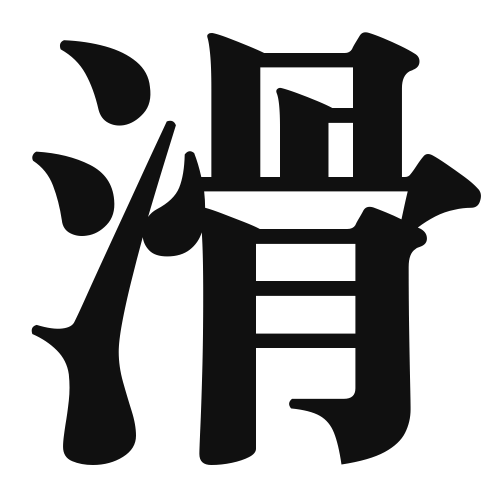1. Overview of Meaning
The kanji “滑” (read as “sube” or “katsu”) primarily means “slippery” or “smooth.” It is often used to describe surfaces that are slick or to indicate a lack of friction.
2. Formation and Radical
Formation of the Kanji: The kanji “滑” is a phono-semantic compound (形声文字), which means it combines both a phonetic and a semantic component. The left part “氵” (water radical) suggests a connection to smoothness or slipperiness, while the right part “活” (which means “to live” or “active”) contributes to the pronunciation.
Radical: The radical of “滑” is “氵” (water), which is often associated with things related to liquid or smoothness.
3. Examples of Usage
Common Words and Phrases: Some frequently used words that include “滑” are:
- 滑る (suberu) – to slip or slide
- 滑らか (nameraka) – smooth
Example Sentences in Daily Conversation:
- この道は雨で滑りやすいです。 (Kono michi wa ame de suberiyasui desu.) – This road is slippery because of the rain.
- 彼の話し方はとても滑らかです。 (Kare no hanashikata wa totemo nameraka desu.) – His way of speaking is very smooth.
4. Synonyms and Antonyms
Similar Kanji: A similar kanji is “滑らか” (nameraka), which also means smooth but is often used to describe textures or surfaces that are pleasing to the touch.
Opposite Kanji: An antonym is “粗い” (arai), which means rough or coarse, indicating a lack of smoothness.
5. Cultural and Historical Background
Connection to Japanese Culture: The concept of smoothness is significant in Japanese aesthetics, often associated with beauty and elegance in art and design.
Proverbs and Idioms: One common saying is “滑らかな道を行く” (namerakana michi o iku), which translates to “to walk a smooth path,” symbolizing an easy or trouble-free journey in life.
